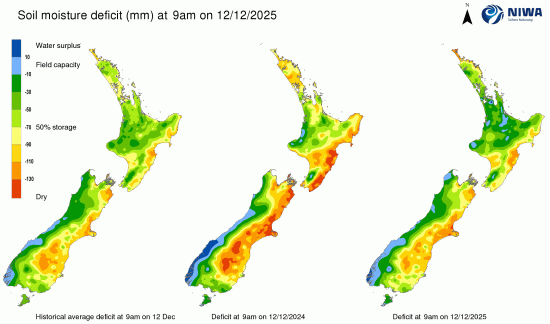Here's our summary of key economic events overnight that affect New Zealand with news China's funk is getting deeper.
But first, we can report that international airfreight volumes are strong, with the July levels +8.9% higher than the July 2019 levels. (We are ignoring the distorted July 2020 base.) The strongest market is North America (up +21%) and the weakest is Asia/Pacific (up +4.4%).
But in the US itself, consumer sentiment is sagging somewhat. The widely-watched Conference Board survey reports a dampening to a six month low in August. The retreat is being attributed to growing fears of the delta pandemic, and the bite of rising inflation.
The August Chicago PMI also reports a pull-back, although not a major one and it is still expanding at an above-average clip in the industrial Mid-West heartland.
Although it is slightly dated data, the Case-Shiller 20-city home price index in the US increased a record +19% in June 2021 from a year ago, following an upwardly revised +17% rise in May, and above market forecasts of an 18.5% increase. Phoenix (+29%), San Diego (+27%), and Seattle (+21%) reported the highest year-over-year rises.
In Canada, their economy unexpectedly shrank -0.3% from the prior quarter in Q2 2021, ending three straight quarters of expansion. This was mostly due to a decline in housing market activity, and exports. They are in an election campaign there, so this news won't help the Trudeau government.
In China, the official factory PMI shows their expansion has completely stalled. In fact, their services sector contracted for the first time since the start of the pandemic. All their bounce-back gains have now leaked away. Given the heightened sensitivities in China about reporting bad economic trends, there is plenty of dancing around the issue in the Chinese media.
Japan reported another rise in housing starts in July, taking their streak to five straight months, the best run since 2017.
The trend of improving Japanese consumer confidence is intact with the latest August survey. They too are heading towards an election.
Hong Kong's retail sales are still in the doldrums, although to be fair retail has been tough there since before the GFC. Emigration doesn't help. The only bright feature is that they are now comparing with a very weak base in 2020.
India reported strong bounce-back economic growth in the June quarter, but this is very much base-impacted. Analysts see the worst is now behind India, although the pandemic threats are still very real for them. Construction and manufacturing are leading them out of the pandemic.
Inflation in the EU rose to 3.0% in August, a decade high, driven by rising energy costs. But food and other durable goods all rose at +2% or greater. Only the cost of services lagged.
In Australia, their residential building consents are falling. They fell -8.6 in July, declining for a fourth consecutive month to be -25% lower than the peak recorded in March.
However, the Aussie current account surplus increased to a record +AU$20.5 bln in the June quarter and to +AU$68 bln for the year to June 2021, also a record.
There were another 1164 new community cases in NSW yesterday with another 1010 not assigned to known clusters, so they remain completely out of control. They now have 17,921 locally acquired cases. Despite that, they are still announcing further restriction easings. Victoria reported another 73 new cases yesterday, so it is still bad there too and their lockdown is extended. Queensland is now reporting zero new cases. ACT has 13 new cases. Overall in Australia, more than 34% of eligible Aussies are fully vaccinated, plus 24% have now had one shot so far.
The NSW surrender to Covid is having a knock-on impact in Victoria where they now feel elimination is not viable with their northern neighbour having given up on even containment.
Wall Street has started its Tuesday session with the S&P500 off -0.1% in afternoon trade. Overnight, European markets were generally down about -0.2% on average. Yesterday, Tokyo closed up +1.1%, Hong Kong closed up +1.3%. Shanghai closed up +0.5%, all with late afternoon rallies. The ASX200 ended its session up +0.4% and the NZX50 ended up +0.3%.
The UST 10yr yield opens today at just under 1.31% which is up +2 bp from this time yesterday. The US 2-10 rate curve is now at +110 bps and slightly steeper. Their 1-5 curve is little-changed at +71 bps, and their 3m-10 year curve is slightly steeper at +127 bps. The Australian Govt ten year benchmark rate starts today at 1.20% and up +4 bps. The China Govt ten year bond is at 2.87% and down -1 bp. And the New Zealand Govt ten year is now at 1.73% which is unchanged from this time yesterday.
The price of gold is up a minor +US$5 from this time yesterday, now at US$1815/oz.
Oil prices have fallen back by -50 USc so in the US they are now just on US$68.50/bbl, while the international Brent price is just over US$71.50/bbl. Over the past month, the oil price has slipped -4%.
The Kiwi dollar opens today +½c firmer at just on 70.5 USc. Against the Australian dollar we are now up at 96.4 AUc. Against the euro we are firm at 59.7 euro cents. That means our TWI-5 starts today at 73.7, up +50 bps in a day and nearing the top of the 72-74 range of the past ten months.
The bitcoin price has fallen another -2.2% from this time yesterday to US$47,069. Volatility in the past 24 hours has been modest at just under +/- 1.6%.
The easiest place to stay up with event risk today is by following our Economic Calendar here ».


We welcome your comments below. If you are not already registered, please register to comment
Remember we welcome robust, respectful and insightful debate. We don't welcome abusive or defamatory comments and will de-register those repeatedly making such comments. Our current comment policy is here.